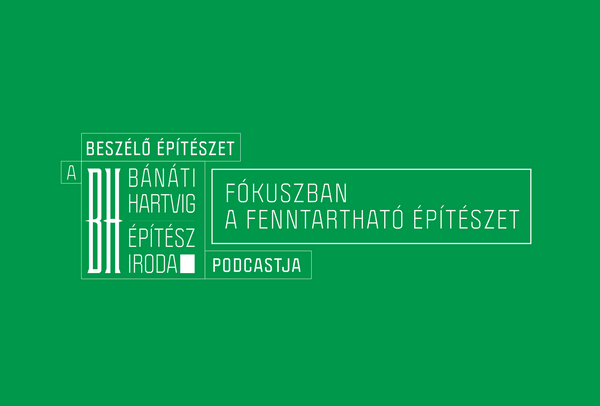There is no question that we have been witnessing unprecedented technological progress since the second half of the 20th century. The universities and the financial systems must keep pace with innovation, not to mention central banks. Interview with Péter Fáykiss, Director of the Digitalization Directorate of the Central Bank of Hungary (MNB), and Gábor Magyar, Ph.D., Associate Professor at the Budapest University of Technology and Economics (BME).
Artificial intelligence, the Internet of Things (IoT), and Industry 4.0 are concepts that characterize the digital revolution that has driven the last decade and dominates the present. How responsive has the Hungarian higher education system been to the digital revolution regarding engineering education?
Gábor Magyar: Higher education in Hungary is very diverse, and overall, I would say that it is relatively slow to respond. Nonetheless, there are institutions, including the Budapest University of Technology and Economics (BME), that can keep up to date. It is not fancy to say it this way, but in most programmes that are relevant to our topic, we focus on mass education. Over the last 30 years, Hungarian higher education has generally expanded. As a result, many people study based on slowly changing curricula. However, there are fortunately a few institutions that offer courses with up-to-date materials for a significant number of students (about 100 out of a class of 400-500). These students are encouraged to work independently and gain relevant knowledge and skills. Many people work on contemporary subjects related to the digital revolution, such as blockchains or artificial intelligence. And fortunately, there are bright, motivated young people who knuckle down on these topics since they are smart enough to recognize what will be relevant in the future.
How difficult is it as a lecturer to cope with new research papers being published every week when developing the curriculum for these seminars? How flexible and responsive can these special courses be? Can they actually reflect on the challenges of the present and the future?
Gábor Magyar: There are many factors, but I would like to highlight two of them. Firstly, there are many young professors in Hungarian engineering schools, especially in BME departments. Many of our teachers are in their twenties and thirties, and they complement well with the older generation of professors. These generations are up to date with the newest scientific results. Secondly, the salaries of the academic staff are dwarfed by the income that engineers, especially IT experts, can get. Therefore, we must ensure that the working conditions are modern. Fortunately, Hungary is quite advanced in IT; our circumstances are not obsolete.
We can hear in the news quite often that one of the Hungarian universities ranked among the top 500 or even the top 100 best universities in the world. Can these lists indicate the competitiveness of Hungarian engineering education either in general or in the specialized courses mentioned above?
Gábor Magyar: I will give a politician’s answer. Firstly, these lists show only a crude image, but there is no other way to compare universities, so we must accept their results. Different approaches would be a bit like the possibility of using a happiness index instead of GDP. They might be an excellent indicator, but that is not what we use in the world. Secondly, in Hungary, we have not yet finished developing an elite education system in parallel with the mass education system. From Germany and the US to China, all countries have already achieved that. If there are 3000 universities in a continent, 80-100 of them should be outstanding and part of the elite system. We have not reached this in Hungary yet. There are some excellence programmes, but I think they are still weak. I hope that shortly a few institutions, or more precisely a few programmes, will be selected which can aim at the top league. That is our goal in various fields, from economics to engineering, but I think we still need to work a lot on this.

We mentioned two concepts above that may be new even to those interested in technology. Industry 4.0 might be explained in a nutshell as the fourth industrial revolution. But what is IoT (Internet of Things)?
Gábor Magyar: We define the Internet as a system that belongs to us, humans. We chat on it, and we read on it. There are 7.5 billion people, and 5 billion use the internet. But IoT endpoints will be the sensors in the machines we use, such as webcams, fridges, or cars. They will be connected to a network. So, in ten years, the bulk of internet endpoints will not be connected to humans but the machines in our homes.
For example, my robot vacuum will be connected to my smart home.
Gábor Magyar: Exactly! Some industry estimations predict 40-50 billion endpoints in 10 years that will not be connected to humans. The 5 billion human endpoints can go up to 7 billion, but the internet will be radically reshaped as it will be a tool that serves us indirectly as well. Due to the massive automation, it will be an enormous global utility present even in deserts. IoT means that these endpoints will see, sense, and intervene. They will turn valves and open dams. IoT will be the network of interconnected things, not the Internet that people use. Indirectly, it will serve humanity, but if we set aside this noble idea, tons of machines will be connected to each other and humans. We will have real-time data on everything if we have the technology to monitor all processes from planning to waste recovery, including production, logistics, transport, and marketing. And that is the point when Industry 4.0 comes into the picture. Industrial digital transformation means that the processes can be designed and monitored at the data level. But this will be risky. Firstly, alienation is clearly a general danger. Secondly, it might also be a huge problem that it will be more difficult to link specific activities to certain territories. It might be easy to carry the day in a region with some activity, but suddenly, a factor might change, and the whole enterprise should move to another continent. Thus, the stories that we know from South American novels, where cities quickly grow but after 40 years of prosperity fall into ruin, could happen at any time in such an environment.

What is the approach of the Central Bank of Hungary (MNB) regarding these concepts?
Péter Fáykiss: These technological trends are great opportunities and serious challenges for the central bank at the same time. A fundamental factor is that the devices will generate so much data that our whole thinking framework should be put into a new dimension. It is said that data is the new oil, and in a sense, data is even more special since, compared to oil, a lot of data just generates even more data. So, the amount of data available to us will increase exponentially. The problem will not be that we run out of data, but the challenge will be that there will simply be so much data that it will be difficult to process it. Not just from a human point of view but also a technological perspective.
Gábor Magyar: Since money drives the world, questions arise about whether it is worth dealing with data and who will pay who in the processes. So, we arrived back at the banks.
Péter Fáykiss: Because of the digital transformation challenges mentioned above, it is crucial that the MNB cooperates with many higher education institutions, including the John von Neumann University in Kecskemét and the Budapest University of Technology and Economics (BME). One aspect of these partnerships is that education and a quality workforce are paramount for a high value-added, sustainable, high-growth economy. Therefore, we try to support higher education wherever possible. This can happen in many ways; sometimes, the MNB staff teaches classes to interested students. Another aspect is launching joint research and other interesting projects with the universities. These are usually very successful collaborations where we can investigate those areas where a central bank traditionally has less experience. A third crucial aspect of the partnership between the central bank and BME is to explore the impact of digitalization on the financial system in more depth. Financial stability is essential for a country; its maintenance is part of the MNB’s mandate. The banks and the whole financial system should prepare for the developments of the coming decades in digitalization. The preparation of the financial system is an absolute necessity if we want to be able to address the challenges of the near future in the field of cybersecurity, financial services, or the implementation of Industry 4.0 and IoT solutions. The MNB can play a major role in this preparation either as a supervisory authority or an initiator in developing an incentive system to make banks and other financial institutions more digital. Our cooperation with the universities can also help in this. Let me give you a concrete example: it is not unequivocal how user-friendly a mobile application is or how easily users can navigate it. But we have a joint project with the university to research these questions. We analyze together the users’ feedback, where they look when using the application, and why they look there. In a nutshell, we evaluate how they use the mobile app.
Some Russian banks were recently removed from the SWIFT banking system, and Mastercard and Visa also suspended their services in Russia. According to Abishur Prakash, the globalized, digital world will eventually shift to a new world order where digital iron curtains will separate continents or countries in line with the spheres of interest. For example, I can throw away my Mastercard bank card if I go to China because it will not be accepted there, and I will need to get a Junior Pay card for that part of the world. In this context, how risky is it from the perspective of a central bank that these digital iron curtains could come down and freeze the financial markets from one week to the next? They might even make the used technology impossible to operate further or seriously hinder its flexibility.
Péter Fáykiss: Most importantly, all countries’ central banks should be prepared for such events. We need to develop systems that can fundamentally manage these risks. For instance, it may be worth using multiple technologies or even multiple core systems. So, if one system fails, financial services can still be managed somehow. Let me give you a specific example: Sweden is a large country where the question of how financial transactions could be handled entirely offline during or after a natural disaster has been raised. The central bank of Sweden is devoting a considerable amount of research to this question, and the MNB is also studying this issue. Central bank digital currency (CBDC) could be potentially used in this case. Hungary is a pioneer in this field since the MNB already published a comprehensive study on CBDC in the summer of 2021. This complex publication fills a pretty significant gap since it discusses the issue from several viewpoints. Besides monetary policy and financial stability viewpoints, technological, planning, geopolitical, and cash flow perspectives are also examined. Coming back to your original question, I think one of the most critical tasks is to ensure that central banks’ staff and leadership are prepared technologically and in terms of other skills to deal with an extreme situation like a war.

How advanced is the MNB’s fintech division compared to other European states?
Péter Fáykiss: I would split the question in two. Firstly, how developed is the Hungarian fintech ecosystem? Secondly, how the central bank encourages digital innovations? The Hungarian fintech ecosystem is not big yet, but it is expanding rapidly. There are a growing number of fintech companies in the domestic market. More than 100 fintech firms operate in Hungary now, and they work quite actively, mainly in digital solutions for financial institutions. This is good news. Moreover, the management of the MNB has signaled the relevance of this topic by being one of the first in Europe to create a specialized division for digitalization within the central bank. In all modesty, I think it can be said that the Central Bank of Hungary is a pioneer in this field. Sometimes even other countries’ central banks approach us to share our experiences on a particular issue. I want to share a few examples: In 2018, the MNB was one of the first in Europe to launch its Innovation Hub, an online platform for helping financial innovators. Another example is the instant payment system which in Hungary has been working since 2020, while in the US, they still just plan to launch it. Lastly, we have recently been consulting with many central banks on CBDC, and the MNB has some forward-looking initiatives in this field as well.
You mentioned that other central banks are contacting the MNB. Is communication better on a regional, for instance, among TSI (Three Seas Initiative) or V4 (Visegrád Group) market participants and central banks, than on a global level?
Péter Fáykiss: We have good relations with the regional countries’ central banks. We cooperate on broader topics and specific issues as well. We also try to monitor what are the top-notch technologies at a global level and how they work. I would highlight one non-regional collaboration, namely our cooperation with the Monetary Authority of Singapore. We organized the World Fintech Festival in Budapest together with them, among others, for the second time in 2021. It is an online event, basically the global extension of the Singapore Fintech Festival. The Singapore Fintech Festival is the largest fintech festival in the world; approximately 60,000 people visited it when, before the pandemic, it was organized on-site. Furthermore, the MNB has also signed a formal memorandum of understanding (MoU) with the Monetary Authority of Singapore. So, there is cooperation with central banks beyond the region that are at the forefront of digitalization.
Péter Fáykiss is the Head of the Digitalization Directorate of the Central Bank of Hungary (MNB). He has been involved in the preparation of several regulatory proposals, such as Basel III and CRD IV. In 2013, he was appointed Deputy Head of the Division for Financial Regulations of the Ministry for National Economy, and in 2014 he became the Head of the Macroprudential Policy Department of the Central Bank of Hungary (MNB), where he coordinated the development and implementation of domestic macroprudential tools. From 2017 he served as the Director of the Macroprudential Directorate of the MNB. Since 2019 he has been the Director of the Digitalization Directorate of the MNB.
Gábor Magyar, Ph.D., is an electrical engineer, an Associate Professor at the Budapest University of Technology and Economics (BME), and the Head of the Artificial Intelligence Working Group of Hungary’s National Tax and Customs Administration. He is the recipient of the László Kozma Commemorative Medal and the Puskás Tivadar Award. He was the Head of the Department of Telecommunications and Media Informatics at BME until 2021, and from 2004 to 2008, he served as the university’s Director of Strategic Affairs. He was also in charge of designing the systems of the National Audiovisual Archive and the National Digital Repository. Between 2014 and 2020, he served as the President of the Scientific Association for Infocommunications.
Graphics: Réka Pisla | Hype&Hyper

“Movement is not enough, animation needs to come alive” | Inside the Hungarian studio where Red Bull commercials are made

Vibrant colors, special motives—the most stylish festival looks from Eastern Europe | TOP 5










